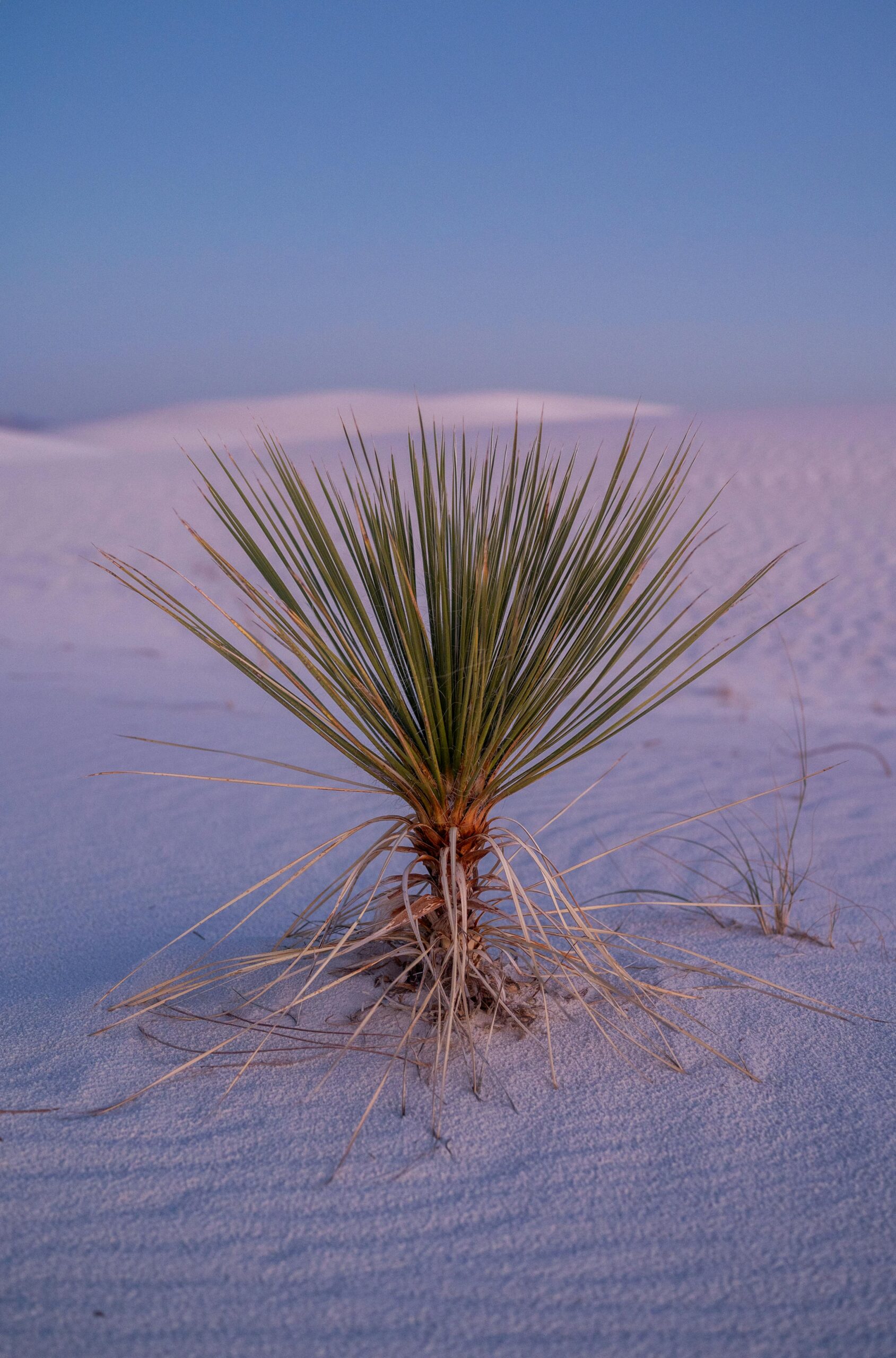New Mexico’s unique desert climate and high-altitude terrain have given rise to a variety of native plants that are not only beautiful but also deeply tied to the state’s history, culture, and traditions. From ancient Indigenous practices to modern herbal remedies, these plants have played a vital role in shaping life in the Land of Enchantment. Here’s a look at some of New Mexico’s most iconic native plants and their cultural significance.
1. Yucca: The State Flower
The yucca plant, with its tall stalks and striking white flowers, is the official state flower of New Mexico. Beyond its beauty, the yucca has been a crucial resource for Indigenous peoples for centuries. Its leaves were used to make rope, sandals, and mats, while the roots were ground into a paste for soap. The flowers and fruits are also edible and were often included in traditional diets.
Cultural Significance: The yucca symbolizes resilience and adaptability, thriving in the harsh conditions of the desert. It remains a powerful emblem of New Mexico’s rugged and enduring spirit.
2. Piñon Pine: A Taste of the Southwest
The piñon pine is famous for its nuts, which are a cherished snack in New Mexico. These small, protein-packed nuts have been harvested for thousands of years and are still a staple in local cuisine, often roasted and enjoyed during the fall season. The wood from piñon trees is also valued for its fragrant smoke, often used in traditional ceremonies and as firewood.
Cultural Significance: The piñon tree represents sustenance and community. Harvesting piñon nuts is a family tradition for many New Mexicans, connecting generations through the shared experience.
3. Sagebrush: A Sacred Herb
Sagebrush is one of New Mexico’s most iconic plants, known for its silvery leaves and earthy aroma. Used by Indigenous peoples for centuries, sagebrush is often burned in smudging ceremonies to cleanse spaces and ward off negative energy. Medicinally, it has been used to treat colds, stomachaches, and skin conditions.
Cultural Significance: Sagebrush holds spiritual importance in Native traditions, symbolizing purification and protection. It’s a reminder of the deep connection between the land and spiritual practices.
4. Cholla Cactus: A Prickly Resource
The cholla cactus, with its spiny stems and vibrant flowers, is both beautiful and practical. Indigenous peoples harvested the cactus pads, removing the spines and roasting them for food. The cactus also provided materials for tools and was sometimes used as a natural barrier to protect dwellings.
Cultural Significance: The cholla cactus represents resourcefulness and ingenuity, showcasing the ability to thrive in challenging environments.
5. Cottonwood Trees: Life Along the Rio Grande
Cottonwood trees, with their broad leaves and towering presence, are a staple of the bosque (riparian forest) along the Rio Grande. These trees have long been a symbol of life and water in the desert, providing shade, habitat, and a source of inspiration for countless generations.
Cultural Significance: Cottonwoods are often associated with renewal and abundance. They feature prominently in Native storytelling and are a key part of the ecosystems that sustain life in New Mexico.
6. Desert Willow: Beauty and Utility
The desert willow, known for its delicate pink and purple flowers, thrives in arid climates. Traditionally, the branches were used to weave baskets, while the bark was used in herbal remedies to treat coughs and fevers.
Cultural Significance: This plant symbolizes beauty and practicality, reflecting the harmony between nature and human needs.
7. Indian Paintbrush: A Wildflower of Legends
Indian paintbrush, with its vibrant red-orange flowers, dots the New Mexico landscape in spring and summer. According to Native folklore, the plant is said to have been created by a young boy who painted the sunset with the flower’s brilliant hues.
Cultural Significance: Indian paintbrush is often seen as a symbol of creativity and the beauty of nature’s palette.
8. Mesquite: A Desert Staple
Mesquite trees are hardy desert dwellers with pods that have been used for food and medicinal purposes. Ground mesquite pods create a sweet, protein-rich flour, while the wood is prized for its use in smoking meats.
Cultural Significance: Mesquite represents sustenance and survival, embodying the spirit of making the most of what the desert provides.
9. Agave: The Plant of Many Uses
Agave plants, with their spiky leaves and towering flower stalks, have been essential to Indigenous peoples for centuries. Agave fibers were used to make ropes and clothing, while the plant’s heart was roasted for food or fermented into beverages like pulque and tequila.
Cultural Significance: Agave symbolizes transformation and resilience, playing a central role in both traditional and modern cultural practices.
10. Prickly Pear Cactus: A Culinary and Medicinal Treasure
The prickly pear cactus, with its flat, paddle-like pads and bright fruit, is a staple in New Mexican cuisine. The pads, known as nopales, are often grilled or sautéed, while the fruit is used to make jellies, syrups, and drinks. Medicinally, it’s been used to treat wounds, inflammation, and digestive issues.
Cultural Significance: Prickly pear represents abundance and versatility, reflecting the adaptability of life in the desert.
Conclusion
New Mexico’s native plants are more than just elements of the landscape—they are integral to the state’s identity, history, and culture. These plants have supported life in the desert for centuries, providing food, medicine, and inspiration. Exploring their stories and uses offers a deeper appreciation for the interconnectedness of nature and culture in the Land of Enchantment. Next time you wander through New Mexico’s landscapes, take a moment to marvel at the plants that make this region truly unique.


